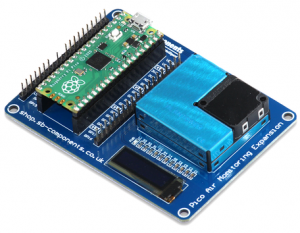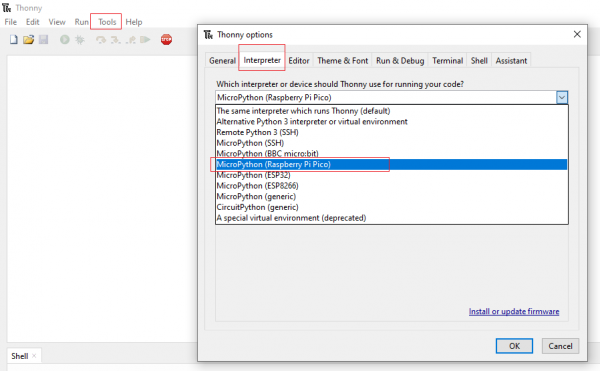Difference between revisions of "Pico-Air-Monitoring"
From SB-Components Wiki
| Line 46: | Line 46: | ||
== Resources == | == Resources == | ||
| + | |||
| + | * '''Github''' | ||
| + | |||
| + | [https://github.com/sbcshop/Pico-WiFi-HAT Source Code] | ||
Revision as of 07:15, 9 November 2021
Pico Air Monitoring Expansion
Air Monitoring Expansion for Raspberry Pi Pico is an open-source portable sensor that has the ability to provide the level of quantity of the suspended particulates with their mass. Pico Air Monitoring Expansion works on operating voltage of 5V with a hi-tech Digital Laser Dust Sensor, PMSA003, sensor with on-board 0.91" OLED Display, that provides the information of suspended particulate matter(PM1.0, PM2.5, PM10) in the air per unit volume via digital output . It communicates via UART(serial). External GPIO Breakout Pins are also available to connect the external peripherals and sensors with it.
Features
- PMSA003 Sensor
- Standard 40 Pins GPIO
- Onboard OLED display 0.91”
- Measure accurately PM1.0, PM2.5, PM10 levels
Specifications
- Model: Pico Air Monitoring Expansion
- Sensor Model: PMSA003
- Communication Interface: UART(Serial)
- Display Type: 0.91'
- Type: Biosensor
- Board Dimension: 91x68 mm
- Measuring Range: 0.3 to 1.0; 1.0 to 2.5; 2.5 to 10 Micron (µm)
- Counting Efficiency: 50% @ 0.3 µm 98% @> = 0.5 µm
- Response Time: ≤10 sec
- DC supply Voltage: 5.0 V
- Operating Temperature range: -10 to +60 Celsius

Buy it From : Click Here
Pinout
Installation
MicroPython
- Stack Raspberry Pi Pico on the female header of Pico Air Monitoring Expansion.
- Connect USB cable on Raspberry Pi Pico USB port.
- Choose interpreter as MicroPython (Raspberry Pi pico).
- Download Pico air monitoring expansion repository from the below link:
Source code: https://github.com/sbcshop/Pico-Air-Monitoring-Expansion
- Open Thonny IDE and create 2 new files as "ssd1306.py" and "pmsa003.py" with the same content of the file you have downloaded from the above repository or you can also save these 2 files in raspberry pi pico from the file menu -> save as and select raspberry pi pico
- now open "Board_Test.py" file in thonny IDE and click on the green play button to run the code. It will display the value of PM 1.0, PM 2.5, and PM 10 on 0.91-inch OLED display.
Resources
- Github

